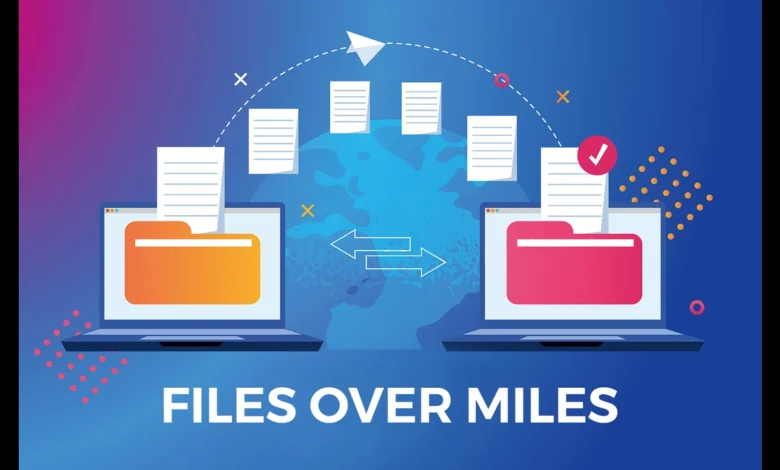Files Over Miles: The Evolution of File Sharing

Introduction
In today’s digital age, file sharing has become essential to our personal and professional lives. The need to share Files Over Miles long distances has increased significantly with the rise of remote work and global connectivity. Gone are the days of physical file transfer through mail or courier services. Today, we have many options to transfer files over miles, and in this article, we will explore the evolution of file sharing and the various methods available.
The Early Days of File Sharing
In the early days of computing, file sharing was a tedious process. Files Over Miles were transferred using floppy disks, CDs, and DVDs. This method was time-consuming, and the risk of data corruption or loss was high. With the advent of the internet, file sharing became more convenient, but slow speeds and small file size limits still limited its limits. The introduction of email attachments revolutionized file sharing, but it still needed to be more suitable for large files.
The Rise of Cloud-Based File Sharing

The game-changer in file sharing was the introduction of cloud-based services like Dropbox, Google Drive, and Microsoft OneDrive. These services allowed users to store and share files online, accessing them from anywhere in the world. Cloud-based file sharing offers a range of benefits, including:
- Convenience: Files can be accessed from anywhere, at any time.
- Security: Files were stored in secure servers, protected from data breaches and corruption.
- Collaboration: Multiple users could collaborate on files in real time.
- Scalability: Cloud-based services offer flexible storage options, allowing users to upgrade or downgrade as needed.
Peer-to-Peer File Sharing
Peer-to-peer (P2P) file sharing is a method of sharing Files Over Miles directly between computers without relying on a central server. This method has been popular for sharing large files, such as videos and audio files. P2P file sharing offers:
- Speed: Files can be transferred quickly, even over long distances.
- Privacy: Files are transferred directly between computers without relying on third-party servers.
- Cost-effective: P2P file sharing eliminates the need for expensive file transfer services.
Files Over Miles: The Future of File Sharing
As technology evolves, file sharing is becoming even more convenient and secure. The rise of blockchain technology and decentralized file sharing is revolutionizing how we share files. With decentralized file sharing, Files Over Miles are stored on a network of computers rather than a central server, offering:
- Security: Files are protected from data breaches and corruption.
- Privacy: Files Over Miles are transferred directly between computers without relying on third-party servers.
- Speed: Files can be transferred quickly, even over long distances.
- Decentralized: Files Over Miles are stored on a network of computers, making it difficult for a single entity to control or manipulate.
The Role of Artificial Intelligence in File Sharing
Artificial intelligence (AI) is increasingly essential in file sharing. AI-powered file-sharing services can:
- Predict file transfer times: AI can predict the time it takes to transfer files, allowing users to plan accordingly.
- Optimize file transfer routes: AI can optimize file transfer routes, reducing latency and increasing speed.
- Detect file corruption: AI can detect file corruption, ensuring that files are transferred accurately and reliably.
The Importance of Security in File Sharing
Security is a critical aspect of file sharing. With the rise of cyberattacks and data breaches, it’s essential to ensure that files are transferred securely. File-sharing services must:
- Encrypt files: Files Over Miles must be encrypted to prevent unauthorized access.
- Use secure protocols: File-sharing services must use secure protocols, such as HTTPS, to protect Files Over Miles in transit.
- Implement access controls: File-sharing services must implement access controls, such as passwords and two-factor authentication, to ensure that only authorized users can access files.
The Future of File Sharing
As we look to the future, it’s clear that file sharing will continue to play a critical role in our personal and professional lives. With the rise of remote work and global connectivity, the need to share Files Over Miles long distances will only increase. As technology continues to evolve, we can expect even more convenient and secure methods of file sharing. Whether it’s through cloud-based services
Conclusion
From physical file transfer to cloud-based services and P2P file sharing, file sharing has come a long way. As technology continues to evolve, we can expect even more convenient and secure methods of file sharing. Whether you need to share files for personal or professional purposes, a range of options are available to suit your needs. So, share your files over miles with ease and convenience.





